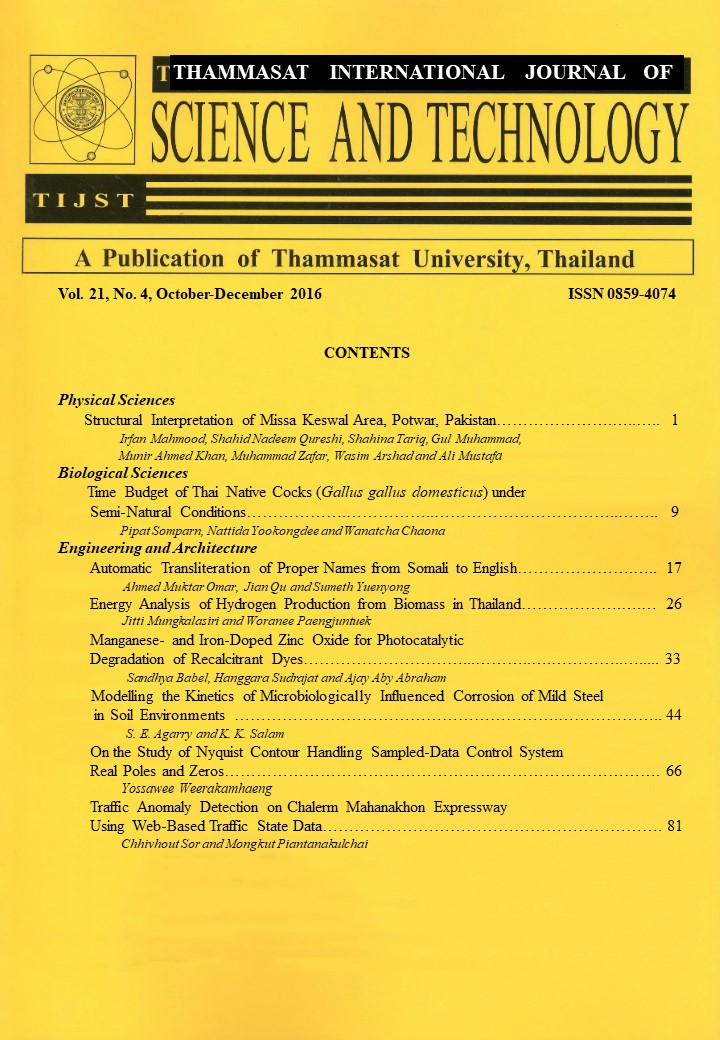Manganese- and Iron-Doped Zinc Oxide for Photocatalytic Degradation of Recalcitrant Dyes
Main Article Content
Abstract
Mn- and Fe-doped ZnO are synthesized by modified sol-gel method. The as-synthesized catalysts are characterized by Fourier transform infrared (FTIR) spectroscopy, scanning electron microscopy (SEM) and energy dispersive X-ray (EDX) spectroscopy. Their photocatalytic activity is investigated for the degradation of methylene blue (MB) and amaranth (AM) under UVA and visible light. The results show that the doping of Mn and Fe generally leads to enhanced photocatalytic activity. However, compared to Fe-doped ZnO, pristine ZnO prepared from zinc acetate (acet-ZnO) shows better performances. For instance, using 1 g/L of catalyst under UVA light, the MB degradation with acet-ZnO and Fe-ZnO are 98 and 43% in 90 min at pH 7, respectively. Adsorption of dye insignificantly contributes to the dye removal. Less than 5% of dyes are adsorbed within 2 h in the absence of light. Furthermore, Mn doping is more effective in enhancing the photocatalytic activity. UVA is found to be a better light source for all the catalysts. Using UVA light, 5 mol% Fe-ZnO with concentration of 1 g/L can degrade 93% of AM in 90 min at pH 7. Using visible light under identical experimental conditions, 10 mol% Mn-ZnO gives 50% efficiency for the AM degradation. In all the cases using doped ZnO, the dye degradation increases with increasing catalyst concentration and irradiation time and decreases with increasing dye concentration. Increasing pH generally increases the dye degradation up to an optimum value. Moreover, the MB and AM degradation by Fe-ZnO under visible light mainly occurs through a self-sensitization mechanism instead of oxidation by reactive species. Overall, the developed catalysts are able to efficiently degrade MB and AM in a short period of time. However, they are not that reusable. Therefore, proper techniques are required for regeneration so as to achieve appreciable reusability.
Article Details
How to Cite
Babel, S., Sudrajat, H., & Aby Abraham, A. (2016). Manganese- and Iron-Doped Zinc Oxide for Photocatalytic Degradation of Recalcitrant Dyes. Science & Technology Asia, 21(4), 33–43. retrieved from https://ph02.tci-thaijo.org/index.php/SciTechAsia/article/view/72005
Section
Engineering


